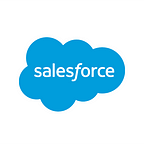Redefining the Sales Process as the Entire Client Experience
By Robin Kuhn Director of Sales Operations at Kissmetrics
So many companies are constantly looking to improve their sales process to close more deals. It’s a sales team-centric approach. Although this is effective, my experience as a prospect always started with brand awareness, which is further up the sales cycle. While evaluating our sales process, I went outside the traditional thought and defined the sales process as the entire client experience, from beginning to end.
The ultimate goal was to segment the funnel so each department could measure the success of their activities and define the SLAs between departments. By doing this, we were able to:
1. Define a clear sales process from first touch through customer success;
2. Reduce contention among departments by articulating expectations for each step in our sales funnel;
3. Provide predictive analytics, which in turn allowed improved collaboration between departments.
The diagram above shows the client lifecycle from beginning to end — our official sales process. After this was established, there were a few more steps to tackle so we could provide valuable insights back to the business. More granularly, we redefined these funnels:
- Marketing-to-sales funnel
2. Sales stages with the buyer process
3. Customer success stages and benchmarks
Once each stage was defined, we were able to track them from a high level down to the nitty-gritty. How did this change our business? Marketing no longer had to prove its value to sales. Instead, marketing was able to control the pipeline by steadily flowing leads to sales. Sales reps could look up the marketing pipeline and have insights/prediction on what was coming their way. We were able to track bottlenecks and quickly adjust campaigns/activities if they weren’t proving successful. And our account executives better understood what the buyer was going through by connecting the sales stages with the buyer process; they could speak to the prospect with targeted messaging. Once the client signed up, our customer success team could proactively work with the customer to ensure they were getting value out of Kissmetrics.
Marketing-to-Sales Funnel
The milestones in the marketing funnel were based on behavior and/or demographic indicators. Kissmetrics (the software) tracked the prospect’s activity, which was transferred into Salesforce where we leveraged the information into our marketing campaigns. Now that Pardot is fully integrated with Salesforce, certain indicators trigger messages to our prospects and nudge them along to becoming a Marketing Qualified Lead (MQL). Sales Ready Leads (SRL) were also explicit, so we could leverage workflow rules to automatically move MQLs to SRLs, thus improving our hand-off from marketing to sales.
The rest of the funnel, managed by sales, was also tracked in Salesforce to measure conversions down to won deals. Additionally, the processes within these sales milestones helped the Sales Development team and Account Executives work seamlessly together.
Sales Stages with Buyer Process
There are various articles out there about Sales Stages versus the Buyer Process. Both are great on their own, however the combination of both enables the Account Executive to approach conversations with more control. Showing our sales teams what buyers were going through helped them frame their messaging to guide the prospect towards a decision. Additionally, this helped our Product Marketing team build out collateral and battle cards by sales stage.
Customer Success Stages
Last but not least, the Customer Success Stages were designed for our Customer Success Managers (CSM) to help our new clients grow with Kissmetrics. This 30–60–90–180 day program was easily tracked within Salesforce. The integration we built from our app to Salesforce allowed for reports and dashboards to measure what clients were doing within Kissmetrics. These benchmarks empowered our CSMs to start each week with clear goals and tasks. There was no mystery in what they needed to do to ensure clients were adopting the product.
Measuring the Client Lifecycle
With this end-to-end lifecycle, our business knew exactly what we needed to do and could measure the success of each team. The data living in Salesforce gave us real-time metrics on our sales process by building out various dashboards for the departments to use in analyzing the data. One of the main dashboards showed each milestone, including what we achieved the previous month, where we were at in the current month, and what our current month’s goal was. Tracking the conversions between stages gave us visibility beyond just quantity and dollar amounts. We could see % to goal, growth percentages, month-over-month metrics and year-to-date metrics from both a micro and macro perspective.
The result of this was company alignment within our sales process and solid teamwork to help the success of Kissmetrics.
